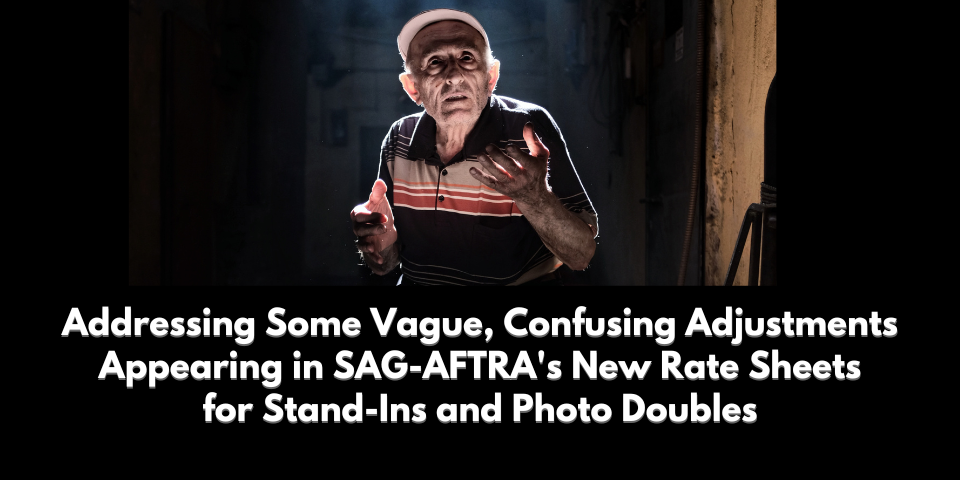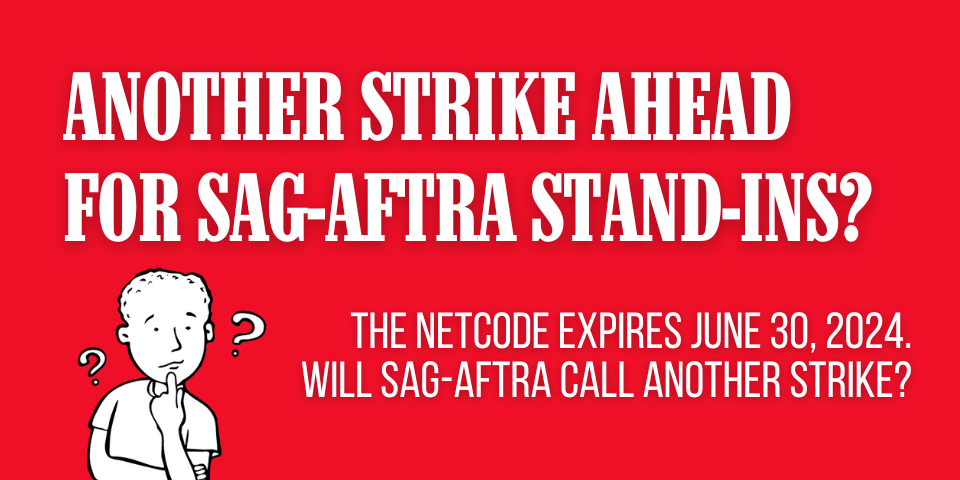The tradition of putting a stand-in’s name and character name on a piece of tape and affixing that tape to the stand-in’s body is a practice that has been in existence in the film and television world for quite some time.
However, the practice has mixed utility, and it’s a practice I’m largely against given how it’s actually used — or not used. Here are some thoughts on the practice of putting labels on stand-ins.
The Arguments for Labeling Stand-Ins
Labeling stand-ins serves a number of purposes for a production.
Oftentimes the first shot is a wide shot that includes several actors in the scene. In order to discern the stand-ins from background actors also in the shot, labels serve to distinguish the stand-ins a bit, drawing the eye to them and away from the background actors.
Obviously, when there aren’t background actors in the shot, labels help to distinguish which stand-in is standing in for which character. For example, in the case of two blond stand-ins standing in for two blond actors, the labels bear the character names and thus distinguish which blonde is standing in for which blond actress.
In the case when it’s obvious which stand-in is standing in for which actor, the labels simply serve as name tags for the crew to use to know the names of the stand-ins and to better direct them. That is, knowing a stand-in’s name makes it better to get the stand-in’s attention when getting him to move.
These are arguments for the use of labels on stand-ins. But there are also arguments against their use.
The Arguments against Labeling Stand-Ins
In practice, labeling isn’t always used in line with its utility, and in these cases a stand-in might object to wearing a label.
For one, some crews demonstrate a blatant disregard to learn or call you by your name as a stand-in, even if it is clearly presented on your label. On a more positive note, some crews learn your name and take notes as to your name and the character for whom you’re standing in. In both cases, the need to wear a label when you are standing in is dubious.
Furthermore, wearing a label with your name on it — especially one as flimsy as a piece of tape — is largely degrading, especially when you are on a set of crew members who are not wearing name tags themselves for you to learn their names. Day-playing first-team actors do not wear labels with their names on them, meaning crews have to figure out these actors’ names without the aid of labels. The same regard should be held for day-playing stand-ins.
Oftentimes it is part of the job responsibility for a background PA to provide a label for a stand-in — even if logic would dictate it is unnecessary to provide one. For instance, sometimes labels are affixed to stand-ins deep into production even though labels are impractical at this point. In such cases, the stand-ins may be well known by the crew, so providing a label is unnecessary because the crew knows the stand-ins’ names and probably their character(s). While it might not be wise to argue against the job responsibilities of the background PA, it may be worth asking whether it is still necessary for you to wear a label if you’re working continuously on a production as a stand-in.
Test Labeling’s Utility
The next few times you stand in and wear a label, note whether the label is useful. Are you called by your name, or not? Does it help determine for which character you’re standing in, or not? If you wear your label at the bottom of your shirt rather than at the top, or if you wear your label upside down, does anybody care? If you feel your job is secure: What happens when you (oops!) lose your label for a bit and don’t wear it? Does anybody miss it?
Such experiments may make a case for or against the wearing of labels. Of course, sets differ, and some sets may appreciate labels much more than others so you’ll have to continue to test labels’ utility. Which do you think will be the likely result: labels are more or less useful than argued?
Have an opinion on wearing a label when you stand in? Share your opinions below!






I don’t mind wearing a label when I work on a set that I’ve never worked on before. I do find that the camera operators make an effort to look at my label and learn my name so they can direct me. But if I’m on a set that I work on regularly, I don’t wear a label.
Tip: If your name and the character’s name is written on one long piece of tape, I rip it to divide the names and place the piece of tape with my name above the piece with character’s name when affixing it to my shirt.